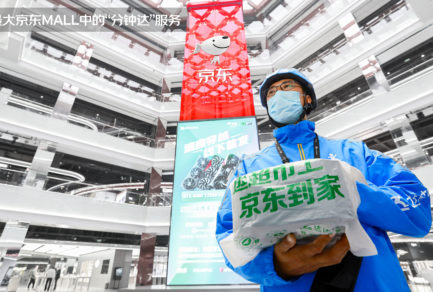Aug 20, 2021|
Report: Automotive Consumption Trends of China’s Gen Z in 2021
by Vivian Yang
In the next 10 years, China’s automotive market will see a boom in the third to fourth-tier cities, with people born after 1995 being the main force of car buyers, according to the 2021 Automotive Consumption Report of Gen-Z by JD Big Data Research Institute released on August 18th.
Besides the vast incremental market opportunities, the report also noted that consumption upgrade will continue to be the main trend of the addressable market, largely driven by the users from China’s younger generation with higher education who prefer their driving gears to have better quality, roomier and more popular.
There have been 281 million cars in China by the end of 2020, a number on par with that of the US. At the same time, new energy vehicles experienced leapfrogging development from 2014 to 2020, making the country the world’s largest single market of both new cars and new energy vehicles – a pace in sync with the growth and consumption demand of China’s post-1995 generation.
JD’s data showed that in 2020 online sales of new energy vehicles on JD.com increased by 6.7 times year-on-year, and another 4.3 times in the first half of 2021 compared with the same period of 2020.
“I enjoyed the experience (of online booking of cars and services +offline driving test), as it can offer standard price and services from dealers through the platform that makes everything traceable and gives me peace of mind,” wrote a customer on JD Auto’s webpage.
There’s no less priority for safety and functional performance as Gen-Z choose their automotive products. Actually, according to the report, they are the top group of consumers to buy high-end tires. JD’s data shows that sales of tire brands such as Michelin, Dunlop, Bridgestone, Continental, Pirelli, YOKOHAMA and others achieved 40% growth in the first half of 2021 compared with the same period last year on JD Auto.
At the same time, the motorcycle culture is sizzling among Chinese youth as the sales of motorcycles and e-bikes rise rapidly in both upper- and lower-tier cities. “For one thing, cycling makes commuting and parking much easier in cities, and for another, the growing variety of cycling products on the market is becoming a popular way for young people to show their taste and attitude,” noted Fei Lu, senior researcher of JD Big Data Research Institute.
Women are buying more motorcycles than men in the first half of 2021, and among consumers under 35 who buy motorcycle products on JD.com, the growth rate of females is also faster than males’.
Gen Z are the main shoppers of novel automotive products that are popular on the internet. Best-selling items include multi-function pumps, car wrap films, protective films and more.
Along with the steady increase of car ownership and time growth of car usage, China’s automotive aftermarket also presents huge market opportunities in the coming years. “Let’s say each car will cost an average of RMB 4,000 yuan for annual maintenance. The market is expected to exceed RMB 1 trillion yuan and again the young people will take the lead in the consumption upgrade in this market,” noted Lu.
In response to this trend, JD Auto has been stepping up efforts in building its O2O car service model and promoting the digital transformation of China’s automotive industry for better customer services and brand-building opportunities. So far, JD Auto has opened over 1,200 car services stores in nearly 200 cities across the country.

 This Harbin tourism boom has also spurred a surge in sales of winter apparel. JD.com’s data indicates a rapid growth in the sales of warm clothing items such as down jackets, snow boots, and thermal underwear between January 1st and 7th. The sales growth is especially pronounced in southern provinces and cities such as Jiangsu, Zhejiang, Guangdong, Sichuan, and Shanghai. Notably, tall snow boots registered a 206% year-on-year increase in transactions, while padded cotton caps and thickened long down jackets soared by 158% and 134%, respectively. Beyond clothing, travel gear has also seen a considerable uptick, with a 98% year-on-year growth in transactions for large suitcases and travel backpacks in these southern regions.
This Harbin tourism boom has also spurred a surge in sales of winter apparel. JD.com’s data indicates a rapid growth in the sales of warm clothing items such as down jackets, snow boots, and thermal underwear between January 1st and 7th. The sales growth is especially pronounced in southern provinces and cities such as Jiangsu, Zhejiang, Guangdong, Sichuan, and Shanghai. Notably, tall snow boots registered a 206% year-on-year increase in transactions, while padded cotton caps and thickened long down jackets soared by 158% and 134%, respectively. Beyond clothing, travel gear has also seen a considerable uptick, with a 98% year-on-year growth in transactions for large suitcases and travel backpacks in these southern regions.
 JD Health “Family Doctor” Anniversary: Monthly User Growth Rate Doubles
JD Health “Family Doctor” Anniversary: Monthly User Growth Rate Doubles



